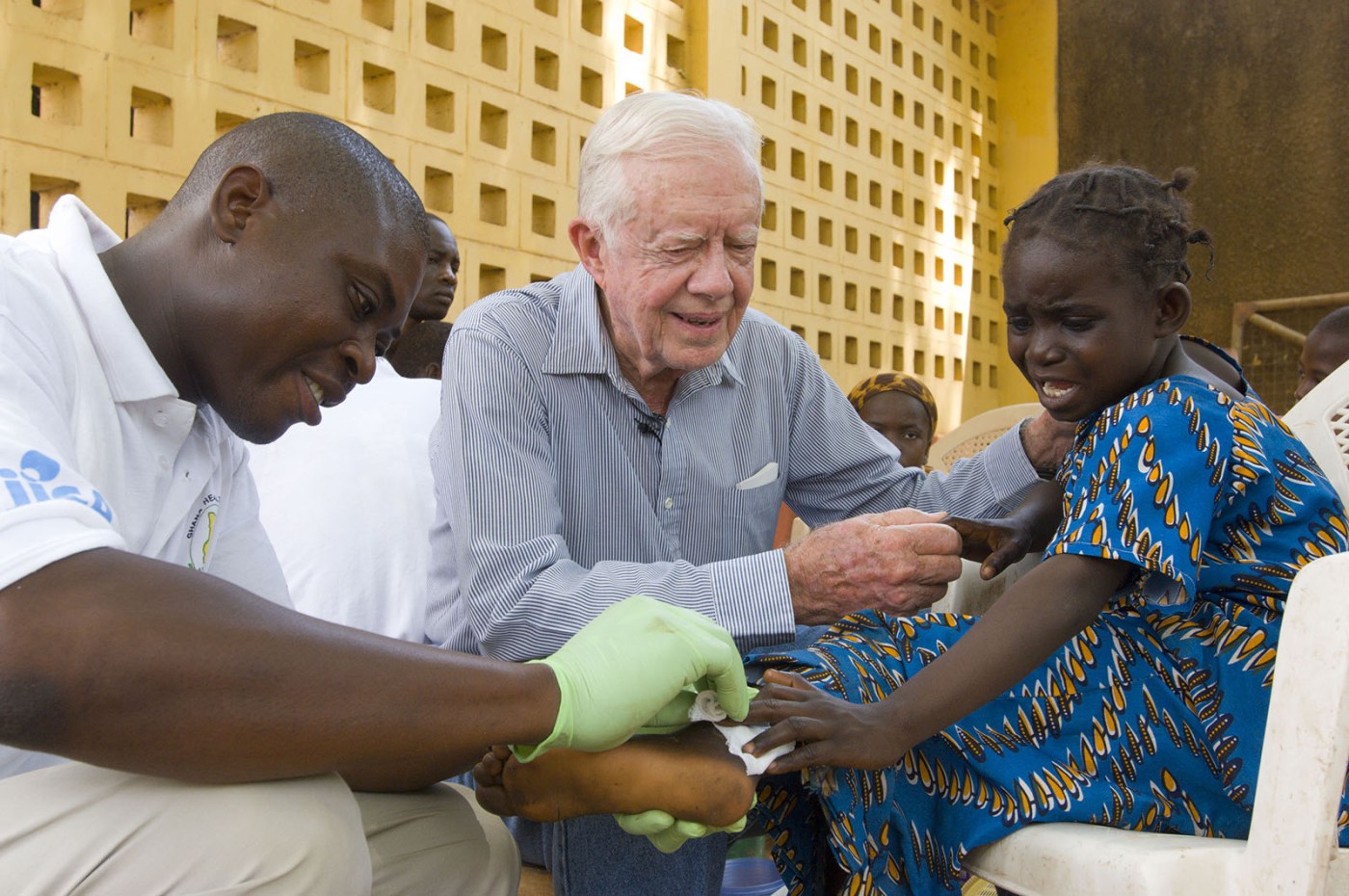
Jimmy Carter goal: Outliving the last of the Guinea worms
Matt Kempner | The Atlanta Journal-Constitution (TNS)
ATLANTA — Nearly a decade ago, Jimmy Carter said he hoped to outlive a parasitic worm once responsible for inflicting pain on millions of people around the world every year.
At the time, as the former U.S. president successfully battled cancer, Guinea worm disease had nearly been wiped out thanks in large part to the efforts of the Carter Center, the Atlanta-based nonprofit he founded with his wife, Rosalynn.
But the worms have stubbornly resisted extinction.
And the chances of Carter outliving them may be fading. He turned 100 years old on Tuesday and has been in home hospice for the last 19 months.
A small number of Guinea worm disease cases continue to be reported each year in humans. There needs to be no cases for three years in a row for the disease to be determined to be eradicated.
When might that happen?
“We are aiming for as soon as possible,” said Paige Alexander, the chief executive officer of the Carter Center. “I would imagine 2030 is a good aim for us.”
“If we win,” she added, it would be only the second disease considered eradicated from the planet after smallpox.
When the Carter Center recently held a big birthday concert in Atlanta in honor of the former president, Alexander was instead in the African nation of Chad, visiting with health officials from various countries to talk about Guinea worm elimination. “I was exactly where President Carter wanted me, which was in the field.”
She traveled with Tedros Adhanom Ghebreyesus, the director-general of the World Health Organization, and the two sent a selfie to Carter in Plains. “I was told he smiled,” Alexander said.
Worldwide last year there were only 14 recorded human cases of Guinea worm disease, according to the Carter Center. When the nonprofit began its eradication effort in 1986, there were an estimated 3.5 million cases in nearly two dozen African and Asian nations.
The 99.999% drop is remarkable, Alexander said.
But getting to zero is also remarkably difficult. In 2015, when Carter told reporters he hoped to outlive the Guinea worm, there were 22 reported cases according to figures supplied by the Carter Center. Since then, the annual number of cases has bounced up and down a bit, reaching as high as 54 in 2019 and as low as 13 in 2022.
So far this year there have been four cases reported, Alexander said. Reports of cases are sometimes delayed.
Related Articles
Haitian immigrants find new footholds, and familiar backlash, in the Midwest, South
Hurricanes like Helene are deadly when they strike and keep killing for years to come
200+ women faced criminal charges over pregnancy in year after Dobbs, report finds
Cheryl Hines finally considering divorce over Robert F. Kennedy Jr.’s sexting scandal: report
‘The white-hot laser of hate’ is trained on Springfield, Ohio. How long will it last?
The battle against Guinea worm disease isn’t waged with vaccines or medicines. Instead, it has hinged on changing the behaviors of people in remote sections of the world where there aren’t potable water systems. In Chad alone, the Carter Center employs 2,000 or more staffers to focus on surveillance.
People become infected after drinking water that contains parasites that will become Guinea worms inside a person’s body. The worms aren’t usually fatal, but they are intensely painful and can weaken their hosts. A year or more can pass before the worms — having potentially grown to 2 to 3 feet long — eat their way out of a person’s body, often by slowly exiting through the skin on a limb. The open wounds from their extended departures are ripe for infection.
Eradication efforts have included providing people with personal drinking filters to avoid ingesting the parasites, encouraging people who are actively infected to stay out of drinking water sources and — now that some dogs and cats have become infected — keeping animals tethered away from peoples’ drinking water supplies.
Organizations also have worked with nations to try to treat water to kill the parasites. But that wasn’t enough, Alexander said. “We can’t treat every single water source that exists in Africa because sometimes they just appear during a rainy season. Sometimes it’s a small pond.”
©2024 The Atlanta Journal-Constitution. Visit at ajc.com. Distributed by Tribune Content Agency, LLC.


